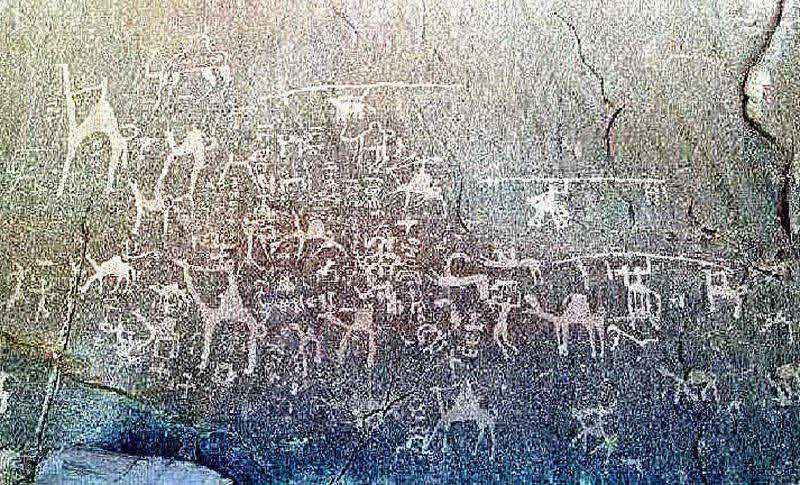“The rock has a series of hands signifying - what ? The friend who drove me here kindly lent his hand to show the scale - pretty much the same size as a hand today. I have no explanation of the rock, just that this is another kind of inscription”A small village to the northwest of the temple was founded by the Nabataeans including a bath complex.
Thamudic inscriptions, at the foot of the cliffs on both sides of the main Wadi, can be found in ancient stone constructions. These inscriptions on the temple confirm the pre-Islamic involvement of the Arabian tribes in the construction of the sanctuary. The temple was taken over by Thamudic tribes and Thamudic graffiti covers earlier Nabataean inscriptions, walls and columns.

Approximately 8.5 kms east of Wadi Rum, at Disi, an Italian excavation uncovered an early Nabataean site, which was occupied before the Nabataeans moved to the rose-red city of Petra. Throughout the valley, are scattered slabs of rocks with inscriptions in early Thamudic writing, recording the names of travelers who passed through centuries ago.
In the Wadi Rum area, there are thousands of drawings and inscriptions from these people who lived here in the first centuries AD. Thamudic drawings include depictions of humans, large feet, ibex, camels, and hunters.Widespread petroglyphs, inscriptions and archaeological remains testify to 12,000 years of human occupation and interaction with the natural environment, illustrating the evolution of pastoral, agricultural and urban human activity in the Arabian Peninsula and the environmental history of the region.

Wadi Rum was the headquarters of Prince Feisal bin Al-Hussein and T.E. Lawrence during World War I, to fight for the Arab Revolt against the Ottoman Empire. Lawrence became a legendary figure for his key role in the fight for the Arab cause. He made his home in this magical area. Ain Asshallaleh, also known as Lawrence s Spring is just a short walk up the hillside from the Nabataean temple. The mountain aptly known as the Seven Pillars of Wisdom, was named by T.E. Lawrence, and was the inspiration for the title of his book of the same name.